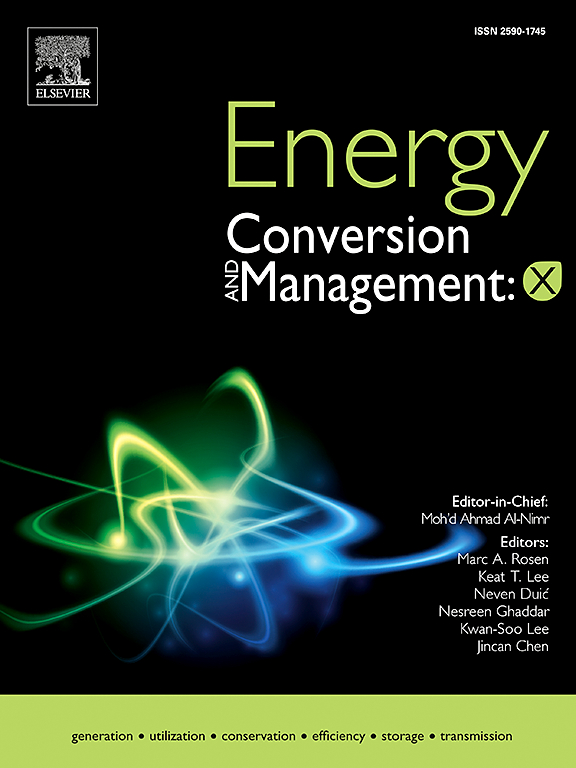Boosting sustainable hydrogen production through the gasification of biorefinery sludges
IF 7.1
Q1 ENERGY & FUELS
引用次数: 0
Abstract
Decarbonisation of energy production is vital to prevent further climatological disasters; sustainable hydrogen production from unique underutilised feedstocks will presents a viable pathway to overcome further energy crises and transition away from fossil reserves. By tapping into severely underutilised lignin-rich biorefinery waste streams such as sludges, produced post hydrolysis (sugar extraction, pre-fermentation), a wealth of hydrogen was unlocked via gasification at 950 °C in 1 % O2/N2, producing a gas-rich product mixture (>70 wt%) in a batch downdraft reactor. Subject to an optimised pre/post-treatment regime, low nitrogen and ash (<2 wt%) containing 1–2 mm sludges derived from barley and wheat straws were found to create a producer gas with hydrogen concentrations of 27.95 vol.% and 22.12 vol.%, respectively, as a result this work has pioneered a waste-to-hydrogen pathway for biorefinery sludges, achieving competitive H2 yields without energy-intensive steam/catalysts. The formed sludges were found to be superior to both raw and leached parent feedstocks without NaOH hydrolysis, in terms of hydrogen production and solid fuel calorific values.
通过生物炼制污泥气化促进可持续制氢
能源生产的脱碳对于防止进一步的气候灾害至关重要;利用独特的未充分利用的原料可持续生产氢气,将为克服进一步的能源危机和从化石储备过渡提供一条可行的途径。通过利用严重未充分利用的富含木质素的生物炼制废物流,如污泥,水解后产生(糖提取,预发酵),在950°C的1% O2/N2中通过气化释放大量氢气,在间歇式下沉反应器中产生富气产品混合物(>70 wt%)。经过优化的预处理/后处理方案,发现含有1-2毫米大麦和小麦秸秆的低氮和低灰分(2 wt%)污泥可产生氢气浓度分别为27.95 vol.%和22.12 vol.%的生产气体,因此这项工作开创了生物炼制污泥的废物制氢途径,无需高能耗蒸汽/催化剂就能实现具有竞争力的H2产量。在产氢量和固体燃料热值方面,发现形成的污泥优于未经NaOH水解的原料和浸出的母料。
本文章由计算机程序翻译,如有差异,请以英文原文为准。
求助全文
约1分钟内获得全文
求助全文
来源期刊

Energy Conversion and Management-X
Multiple-
CiteScore
8.80
自引率
3.20%
发文量
180
审稿时长
58 days
期刊介绍:
Energy Conversion and Management: X is the open access extension of the reputable journal Energy Conversion and Management, serving as a platform for interdisciplinary research on a wide array of critical energy subjects. The journal is dedicated to publishing original contributions and in-depth technical review articles that present groundbreaking research on topics spanning energy generation, utilization, conversion, storage, transmission, conservation, management, and sustainability.
The scope of Energy Conversion and Management: X encompasses various forms of energy, including mechanical, thermal, nuclear, chemical, electromagnetic, magnetic, and electric energy. It addresses all known energy resources, highlighting both conventional sources like fossil fuels and nuclear power, as well as renewable resources such as solar, biomass, hydro, wind, geothermal, and ocean energy.
 求助内容:
求助内容: 应助结果提醒方式:
应助结果提醒方式:


